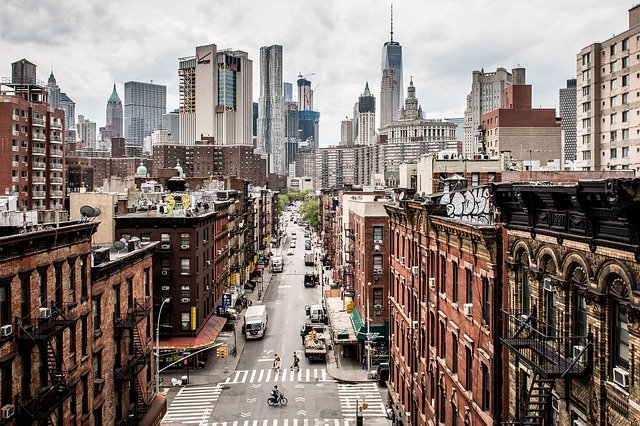
The worldwide social and economic disruptions caused by the Covid-19 pandemic raise a multitude of questions. Here I concentrate on one specific question: Did the virus disproportionately affect particular demographic or socioeconomic groups?
The New York metropolitan area is the hot spot of the Covid-19 pandemic in the US. Although the first positive test result in the city was not confirmed until February 23, 2020, the virus had infected 106,813 (a count based on positive test results) and killed 6,182 people by April 12.
In late March, the City Department of Health and Mental Hygiene released information on the number of tests administered and the number of positive results in each of 177 zip codes, which I roughly interpret as urban “neighborhoods.” Merging this information with information from the annual Census-like American Community Survey provides a detailed picture of the neighborhoods where Covid-19 testing was more prevalent and where the number of positive cases was relatively high.
A key lesson from the analysis is that, at least in the initial phase of the pandemic, testing for Covid-19 was not random across neighborhoods, so that the evolution of the pandemic affected different populations in different ways. Persons residing in poor or heavily immigrant neighborhoods were less likely to be tested during the crucial month of March 2020. At the same time, the probability of a positive test (given that a test was administered) was far larger for persons living in poor neighborhoods, in neighborhoods where large numbers of people reside together, or in neighborhoods with a large black or immigrant population.
Much of the discussion over the spread and impact of the Covid-19 pandemic focuses on the evolution of a single statistic: the number of infections per 100,000 persons in the population. The analysis of the New York City data illustrates the problem with this narrow focus. The rate of infection in the population depends on two distinct factors: the frequency of tests in a particular area and the fraction of positive tests among those tested.
Because testing was not random across New York City neighborhoods, it is crucial to examine how socioeconomic characteristics correlate with each of the two determinants of the measured rate of infection. Some characteristics—for instance, household income—are correlated in opposite directions with the incidence of testing and with the likelihood that a test yields a positive result. Persons residing in poorer neighborhoods were less likely to be tested, but once the test was administered, were more likely to be afflicted with the virus. In the end, we might find little correlation between household income and infection rates, but this finding tells an incomplete story of how the pandemic evolves in a congested urban setting.
© George J. Borjas
George J. Borjas is the Robert W. Scrivner Professor of Economics and Social Policy at the Harvard Kennedy School, USA.
Read more on the coronavirus crisis:
"Coronavirus and the labor market," by Daniel S. Hamermesh
"Fighting a coronavirus recession," by Daniel S. Hamermesh
"Pandemics and the labor market—Then and now," by Karen Clay
"Pricing the lives saved by coronavirus policies," by W. Kip Viscusi
"Health effects of the coronavirus recession," by Christopher J. Ruhm
"The long-term consequences of missing a term of school," by Simon Burgess and Hans Sievertsen
"Coronavirus, telecommuting, and the labor market," by Nikos Askitas
"Expectations about Covid-19 social-distancing measures in Italy and their impact on compliance," by Guglielmo Briscese, Nicola Lacetera, Mario Macis, and Mirco Tonin
"The coronavirus crisis and the next generation," by Bart Cockx
"Korea: A paragon of dealing with coronavirus," by Sok Chul Hong
"Economic implications of postponing the Tokyo 2020 Olympic Games," by Peter J. Sloane
"The sudden growth of employee autonomy during the coronavirus lockdown," by Elisa Gerten and Michael Beckmann
"Mitigating the work–safety trade-off," by Tito Boeri, Alessandro Caiumi, Marco Paccagnella
"Trading off lives for jobs," by Daniel S. Hamermesh
Please note:
We recognize that IZA World of Labor articles may prompt discussion and possibly controversy. Opinion pieces, such as the one above, capture ideas and debates concisely, and anchor them with real-world examples. Opinions stated here do not necessarily reflect those of the IZA.